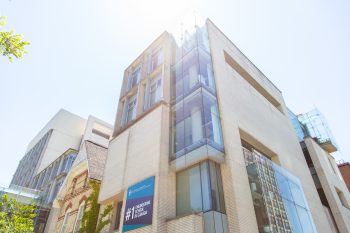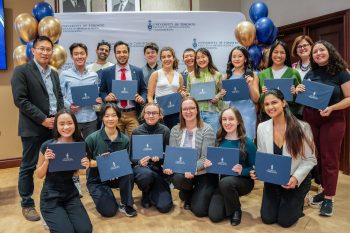October 22, 2009
By Kate Brand Tippin
Researchers at the University of Toronto have developed a novel cell injection test-bed to evaluate the barriers to transplanted cell integration with cardiac tissue. The results provide insights into the barriers that should be considered during heart cell transplantation studies.
The research teams, led by Professor Peter Zandstra (Institute of Biomaterials and Biomedical Engineering), in collaboration with Professor Milica Radisic (Institute of Biomaterials and Biomedical Engineering, Department of Chemical Engineering and Applied Chemistry, Heart & Stroke/Richard Lewar Centre of Excellence, Toronto General Research Institute), have developed and tested a method that allows rapid screening of different cell types for their capacity to functionally integrate into heart tissue, and provides insights into the barriers that, until now, have prevented transplanted cells from adequately merging with the patient’s heart tissue. The specific outcomes are reported by lead author, Dr. Hannah Song.
“Muscle cells that make up the heart’s tissue are permanently lost during a heart attack,” said Dr. Song, post doctoral fellow in the Zandstra and Radisic labs. “This cell loss is one of the leading causes of heart failure. Although cell transplantation can result in modest improvements in cardiac function, several challenges remain, including how to increase the survival, integration and functionality of the transplanted cells within the host tissue.”
This study used a cardiac tissue model, engineered heart tissue, and quantitative molecular and electrophysiological analyses as a test-bed to screen transplantation conditions and specific cell populations for their potential to functionally integrate with host tissue.
Of particular value to scientists is this method’s ability to significantly reduce the time and effort needed to screen known or new cell populations and drugs for their cardiac cell therapy potential, as well as new knowledge about barriers that should be considered during in vivo cardiac cell transplantation studies. In addition, the study suggests, for the first time, conditions that may allow pluripotent stem cell – derived cardiac progenitor cells to be effectively delivered for cardiac cell therapy.
“This is a testament to the extraordinary achievements by our leading researchers who are at the nexus of engineering and medicine in the University’s world-leading Institute of Biomaterials and Biomedical Engineering,” said Cristina Amon, Dean, Faculty of Applied Science and Engineering. “Innovative engineering breakthroughs like this will enhance our health care treatments and advance Canada’s innovation agenda.”
“The work of Professor Zandstra and his colleagues is a great example of how their dedication and innovation in the lab can and will have a tremendous impact on the lives of patients,” said Catharine Whiteside, Dean, Faculty of Medicine.
The research was published October 21 in Proceedings of the National Academic of Sciences and was funded in part by the Heart and Stroke Foundation of Ontario. The research can be found online at:http://www.pnas.org/content/early/2009/10/21/0905729106.full.pdf+html.



